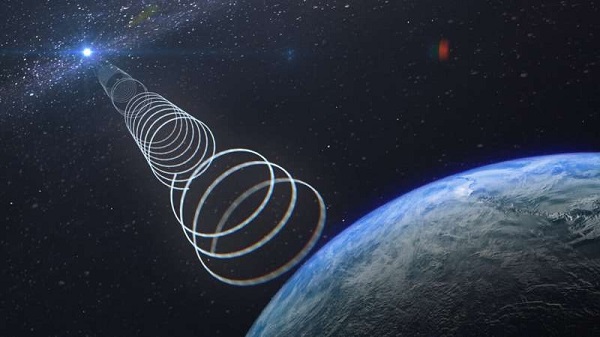New Delhi, (Samajweekly) Indian researchers have refuted a recent claim of the discovery of a radio wave signal from cosmic dawn, the time in the infancy of the Universe when the first stars and galaxies came into existence, an official statement said on Thursday.
A team of researchers from Arizona State University (ASU) and MIT in the US had in 2018 detected a signal from stars emerging in the early universe using data from the EDGES radio telescope. The study published in journal Nature had then created much excitement in the astronomy community around the world.
The ASU/MIT team had claimed the discovery of a radio wave signalling the birth of the first stars, which was also hailed by Harvard astrophysicist Avi Loeb as worthy of two Nobel prizes. However, the world awaited confirmation from independent researchers.
“Utilising the indigenously invented and built SARAS 3 radio telescope, researchers from Raman Research Institute, an autonomous institute of the Department of Science & Technology refuted this claim,” a release from Ministry of Science & Technology said.
The SARAS 3 radio telescope invented and built by the astronomers at the RRI is the first telescope worldwide to reach the required sensitivity. The signal claimed to have been detected by the ASU/MIT team required exotic and non-standard physics and caused astrophysicists worldwide to invent new theories, which are all now redundant.
“This research of the Raman Research Institute restores confidence in our understanding of the evolving Universe, re-establishing the prevailing cosmological model of the cosmos,” it said.
The RRI findings are now published in Nature Astronomy.
SARAS is a niche high-risk high-gain experimental effort of the RRI initiated and led by Professor Ravi Subrahmanyan, along with Professor N. Udaya Shankar. It was a courageous attempt to design, build and deploy in India a precision radio telescope to detect extremely faint radio wave signals from the depths of time, from our “Cosmic Dawn” when the first stars and galaxies formed in the early Universe.
The CMB Distortion Laboratory at RRI has pioneered the development of state-of-the-art radio telescopes which are designed to detect faint cosmological signals, especially radiation emitted by hydrogen atoms at the 21-cm wavelength (1.4 GHz) arising from the depths of the cosmos.
The signal from Cosmic Dawn is expected to arrive on Earth stretched in wavelength to metres and lowered in frequency by the expansion of the Universe to lie in the radio frequency band 50-200 MHz.
“Detecting a faint signal from such an early period of the Universe is extremely difficult. The celestial signal is exceptionally faint – buried in sky radio waves that come to us from the gas in our own Galaxy, the Milky Way, which are a million times brighter,” the release said.
Besides, this cosmic signal is in a radio wavelength band used by numerous terrestrial communications equipment and TV and FM radio stations, which makes detecting the extra-terrestrial signal extremely difficult, it added.
However, RRI scientists and engineers have risen to the challenge and designed and calibrated the SARAS radio telescope to discern signals from Cosmic Dawn. It is one of the most sensitive instruments in the world in this field of research today.
After a rigorous statistical analysis led by Dr Saurabh Singh, a research scientist at RRI, SARAS 3 did not find any evidence of the signal claimed by the EDGES experiment. The presence of the signal is decisively rejected after a careful assessment of the measurement uncertainties.
Therefore, the finding implies that the detection reported by EDGES was likely contamination of their measurement and not a signal from the depths of space and time. SARAS 3 was indeed the first experiment to reach the required sensitivity and cross-verify the claim of the signal detection, the release added.










